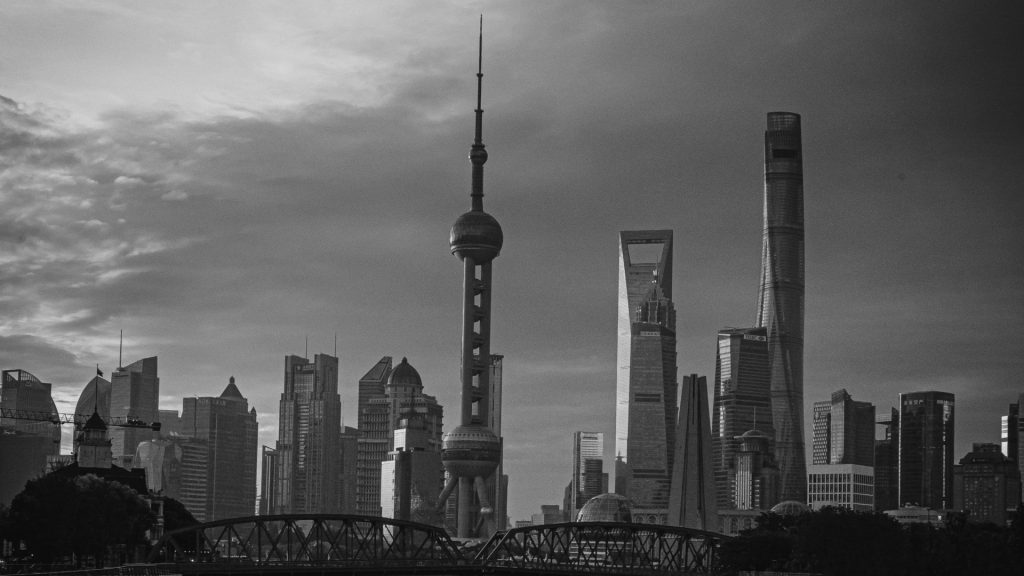Although some sources estimated that this event could take place between the years 2025 to 2030, and others thought that it would be before, it is already considered that China is the first world economy, taking into account certain indicators.
In this way, entering the year 2023, the Asian Giant, as it is also called, would be surpassing the United States and the European Union, in real terms of goods and services. Let’s look at the details.
From communism to the market economy
When Mao Tse Tung proclaimed the People’s Republic of China, in 1949, it was a primarily agricultural country, with one of the lowest literacy rates in the world (about 20%).
During this government, until the death of the leader (which occurred in 1976), it cannot be said that there were too significant changes in terms of China’s position in the world economic outlook.
But, according to the research on the topic, the rise to power of Deng Xiaoping (1978-1992) marks the beginning of a new era, opening up to the world. His project was to turn the country into an industrial power and a market economy, although without losing the socialist character.
Now well, the results, which we can see today, did not take place overnight, but throughout a process, in which it is possible to distinguish five periods within the Chinese economic reform:
- Agricultural Reform (1979-1992): De-collectivization, establishing contracts between local authorities and peasant families, enabling the possibility of selling surpluses. With this, grain production, for example, increased by 56%.
- Regulation and administrative restructuring (1993-2005): The reforms sought to regulate competition, although without limiting it, considering it as a force for economic development.
- Change in the ownership system (2005-2012): Mainly referring to land and other real estate. In this context, we can also mention the increasing urbanization, in contrast to the rural predominance of previous periods.
- IMF Reserve Currency Basket (2012-present): Already since 2001 China had joined the WTO, and then the People’s Bank of China declares the inclusion of the yuan in the SDR.
The effects of these reforms were observed in a noticeable, rapid and sustained economic growth. In this regard, it is pointed out that between 1978 and 2005 the annual growth was from 9.5% to 10%. And this rhythm was maintained for more than 40 years until the arrival of the pandemic.
China’s economy today
In an article published in the journal Ideele, it is stated that China can be considered the world’s leading economic power, in terms of goods and services, as well as in purchasing power parity, taking into account a recent IMF report.
However, its estimated GDP for the year 2021 was 17.73 trillion USD. It still does not reach the United States (23.32 billion USD), but yes, it has overtaken the European Union, which now moves to third place.
Some estimates say that in five years, it will very possibly surpass the United States. That is to say, by 2028 China will be the largest economy, with an average annual growth of 5.7%.
And although it was the first one affected by COVID-19, it managed to cope with the pandemic, implementing strategies that managed to avoid the eventual paralysis of the market. In fact, it is the only major economy that did not enter a recession in 2020.
While remaining a predominantly agricultural nation (it has to feed 17.75% of the world’s population), in 2019, it also became the most valuable industry in the world, valued at 3.8 trillion, contributing almost 20% to global manufacturing; and has the largest electronics industry.
In particular, some indicators can be pointed out that denote the power of China:
- The largest exporter of goods.
- The higher growth rate in consumption.
- The second largest importer.
- The largest producer of vehicles.
- The largest steel producer.
- The world’s largest producer of beer, soybean oil, rice, wheat, potatoes, tomatoes, watermelons, apples, cucumbers, eggplant, carrots, onions, spinach, cabbage, pears, peanuts, melon, cauliflower, broccoli, plums, pumpkins and countless other products.
Challenges of the Chinese economy
However, not all of them are flowers in the garden of the Asian giant. As well, there are some aspects that China needs to take care of so that its economic growth also translates into well-being for its citizens.
First of all, the per capita income should be noted. According to the IMF report, for the year 2021, its nominal GDP per capita stood at 12,990 USD, making it ranked number 60 in the world.
On the other hand, there is a lot of inequality between the different regions. The coastal provinces are more industrialized, while in the interior, especially in the north, we find more backward rural areas. Therefore, the relocation of a significant contingent of the population is being proposed.
In the same vein, it is currently considered that only 7% of the area is arable; and 2 million hectares are lost every year. For such reasons, China is buying land in Africa; it even established an agreement with Ukraine for crops.
Other situations that the Chinese government must address for the coming years, if it wants to continue maintaining economic growth, are the following:
- China produces 5% of the crude oil but consumes 15%.
- Since 2006, China has been the most polluting country in the world.
- Due to the implemented policies regarding population control, the percentage of people of working age has decreased.
All this without forgetting to mention other aspects related to human development in general, such as the problems of child exploitation, slave labor and the legalization of political parties. Pending issues for the Beijing government.
New world order?
There is already speculation regarding the fact that the eventual Chinese economic supremacy may mean a change in the international order, as for the influence it generates, geopolitically speaking.
For now, the European bloc is displaced, and the rivalry between Washington and Beijing is becoming more noticeable. Although it should not be understood in terms of military conflicts, although there has been diplomatic friction since the U.S.-China bilateral economic relationship is the bilateral economic relationship that moves the most money on the planet.
It is in the interest of both nations, then, to play fair. In any case, China’s military might has not grown on a par with that of the United States. Its defense budget is less than half that of the US. And it does not show as much interest in arming itself as its neighbor Japan and Russia do.
The priorities and interests of the Asian giant seem to point, for the moment, in other directions. For example, Beijing has put forward some proposals such as the creation of alternative organizations to the IMF and the World Bank. In this way, they think about the financing of projects in Asia, and economic integration agreements, among other actions, that reinforce the undoubted influence that they already exert.

